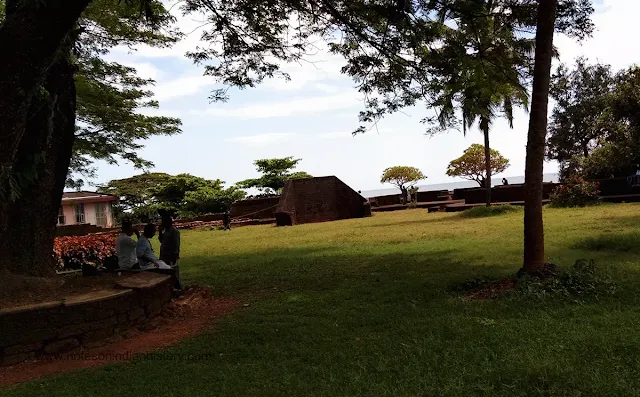Thalassery Fort
Thalassery fort is a renowned tourist destination in the Kannur district of Kerala. The British first arrived in Thalassery in 1683 and constructed a goods shed. They eventually moved their commercial capital from Kozhikode (Calicut) to Thalassery. In 1700, they constructed the Thalassery fort atop a small hill known as Tiruvellapad Kunnu. Tellicherry is the anglicized form of Thalassery.
The site of the fort was chosen for its strategic positioning facing the sea, which offered a strong defense against potential attacks. strong flanking bastions were added and the height was increased in 1708. This square, laterite fort has a grand arched gateway, decorated with intricate carvings of small figurines at the entrance. Inside the fort is a lighthouse.
There are two underground chambers that were once used to store spices like pepper and cardamom. There are secret tunnels that lead to the sea, which may have been used by the fort's inhabitants as an escape route in the event of an attack. These tunnels are currently blocked.
We have a description of the Tellicherry fort from the 'Oriental Commerce of the East India Trader's Complete Guide', by William Milburn and published in 1825: This British settlement on the Malabar Coast, is located about ten miles south of Kannur. The fort, though in a rather deteriorated state, is of substantial size with sturdy walls. Inside the fort, there are residences for the chief and other members of the factory.
The fort serves as a trading hub for both domestic and international commerce. Many ships from China bound for Bombay and Goa stop here to unload a portion of their cargo, which is then sold to the local population. The returns are typically in the form of local products such as ginger, pepper, coconuts, coir, and cotton cloth, which are of high quality and very affordable.
The site of the fort was chosen for its strategic positioning facing the sea, which offered a strong defense against potential attacks. strong flanking bastions were added and the height was increased in 1708. This square, laterite fort has a grand arched gateway, decorated with intricate carvings of small figurines at the entrance. Inside the fort is a lighthouse.
There are two underground chambers that were once used to store spices like pepper and cardamom. There are secret tunnels that lead to the sea, which may have been used by the fort's inhabitants as an escape route in the event of an attack. These tunnels are currently blocked.
We have a description of the Tellicherry fort from the 'Oriental Commerce of the East India Trader's Complete Guide', by William Milburn and published in 1825: This British settlement on the Malabar Coast, is located about ten miles south of Kannur. The fort, though in a rather deteriorated state, is of substantial size with sturdy walls. Inside the fort, there are residences for the chief and other members of the factory.
The fort serves as a trading hub for both domestic and international commerce. Many ships from China bound for Bombay and Goa stop here to unload a portion of their cargo, which is then sold to the local population. The returns are typically in the form of local products such as ginger, pepper, coconuts, coir, and cotton cloth, which are of high quality and very affordable.












Comments